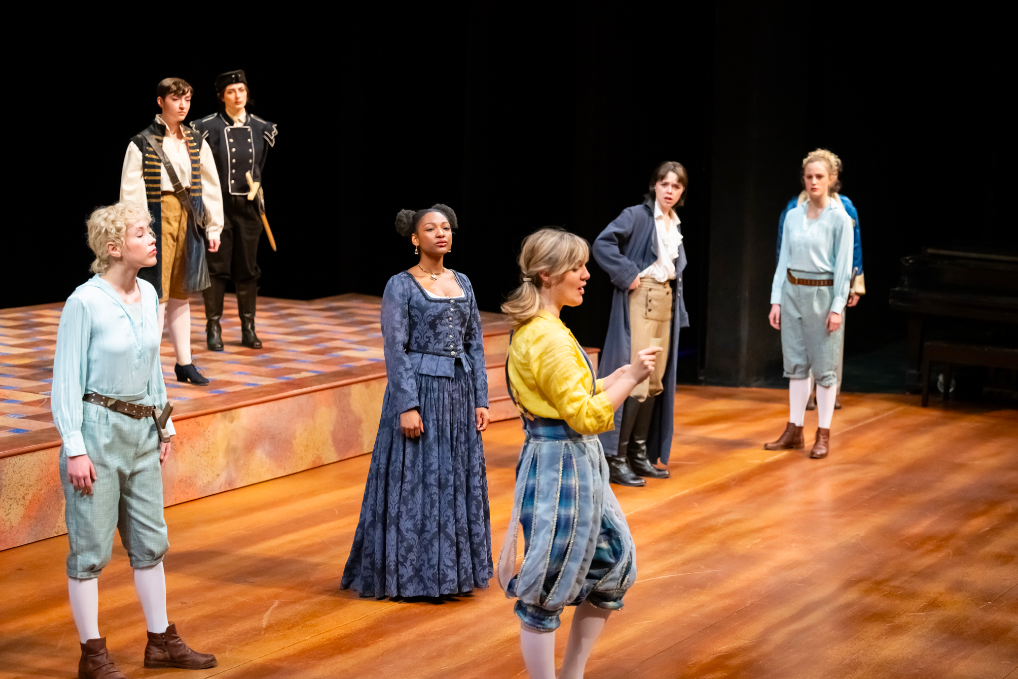Twelfth Night
I was the costume designer for Smith College’s Spring 2025 production of Twelfth Night, directed by Daniel Eliju Kramer.
Mr. Kramer specifically wanted to play around with the idea that each character in the play is trying on different versions of themselves, and as part of that, he wanted to see costumes that embody a sort of stereotype associated with how each character type is portrayed in media. Rather than choosing one specific time period or theme to be the setting, we landed on taking inspiration from how Shakespeare characters are drawn in books made for children. The director wanted strong shapes without too much stiff structure, and in fact wanted the costumes to be historically inspired, rather than historically accurate.
Photos were taken by Derek Fowles.
Design Challenges
When I was first looking at the idea of all of these stereotypes not united under a common era of fashion, it became very obvious that one of the struggles this production would have was going to be tying everything together as a united world. After all, we had people dressed in Elizabethan doublets and Regency coats, and everything in between. Adding to that issue, the set for this production was very minimal, which meant that it couldn’t offer the costumes any help in tying the world together.
The main way I tried to keep everything connected was through a very firm set of rules for the color palette. Comedic characters were usually dressed in golds or bright yellows; Orsino’s court was generally in warm blues and tan; Olivia’s court was made of purples, blacks, and less saturated blue. The color choice was in part based on the Smith College school colors, in order to tie in some of the director’s ideas of trying to ground the play at Smith. It also gave me a good set of contrasting but complementary colors to work with; I could play with different shades of those colors and know that they would still all work together as one world. I think that strict color palette was the main thing that brought everything together in the end, despite everyone being dressed in very different eras of clothing.
Lady Olivia
Lady Olivia’s costume was also fairly effective in helping the actor embody the character. This was especially apparent when seeing the difference in her body language when she was working with the rehearsal skirt, and then when she was in the full costume. While we had very little in the way of petticoats under the skirt of the full costume, just having that volume there changed the way she positioned her hands, and in turn changed the way she held her whole body, making her look especially regal and serene.
Acknowledgements
A very special thank you to my assistant designer, Margot Johnsen, my advisor, Kiki Smith, and the Smith College costume shop team, including Emily Dunn and Tilly Adams, for all their help making these costumes come to life. Thank you as well to the photographer, Derek Fowles, for taking such wonderful photographs of this production.
Duke Orsino
There were a few characters whose costumes ended up succeeding in that particularly well. Duke Orsino, for example, was based on common images for a lovelorn man of significant wealth – Jane Austen male protagonists, to be specific. That gave me a really concrete image to work with, and was in fact one of the first costumes that Kramer really latched onto as something he liked. That costume also gave the actor some fun things to work with; the coat in particular had a whole personality of its own that seemed to bolster the energy the actor was already putting into the character.







